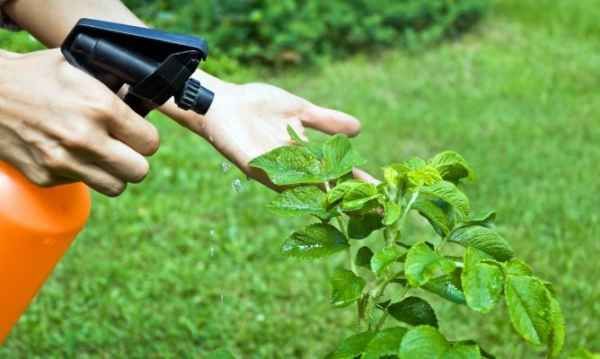A Closer Look at Fungicides and Plant Diseases in Rainy Season

Fungisida dan Penyakit Tanaman di Musim Hujan
(Istimewa)Aside from bacteria, fungi pose a threat to the quality of crop yields. Facing the problem, farmers could use a variety of methods including fungicides.
Fungicides are types of pesticides utilized to control (eradicate, inhibit or prevent) fungi or pathogenic fungi that cause diseases. Fungicides are specifically made in various forms namely powder, liquid, gas, and granular. To date, powdered and liquid fungicides are most commonly used by farmers.
In agriculture, fungicides are utilized to control fungi on seeds, seedlings, stems, roots, leaves, flowers and fruits. Farmers could just spray the fungicides directly onto the plants, stem injection, rooting, seed soaking and fumigating.
Plant Diseases Caused in Rainy Season
Rainy season is identical with cooler and humid weather. Many plants may benefit from abundant rainfall. However, during this period, we still need to watch for our plants, especially against pests or plant diseases.
The majority of pests and diseases will attack vegetable plants. This is because rainwater is acidic that can destroy the waxy coating on leaves. As a result, leaf nutrients will be lost so the plant is not resistant to cold, fungi and insects.
Citing Gardening Know How, extremely wet weather can cause diseases on plants through pathogenic bacteria and fungi that are fostered by long-term humidity in the leaves and root system.
Excessive or continuous rainfall can cause the plants to suffer from stunting disease, leaf spots, rotting on leaves, stems, or fruits, and wilt. In fact, in severe cases it can lead to the death of the entire plant.
There are a number of diseases that can attack plants during the rainy season. These diseases attack plants in different ways.
- Canker
Canker fungi spread on deciduous and evergreen trees during the excessive rains. Usually, this type of fungus begins to appear on the lower branches of the plant, then gradually spreads up the tree.
Also called blight, canker appears as dark lesions on leaves, stems, flowers and fruits with premature leaf fall. To combat this fungus, remove tree debris during the growing season. Then prune leaves to increase airflow and remove infected plant parts. Spraying fungicides may work but are impractical on large trees.
- Powdery mildew
Powdery mildew is another common disease caused by excessive rainfall. The fungus appears as white powdery spots on the leaf surface that infects new and old foliage.
Signs of this disease are generally when plant leaves fall prematurely. Wind carries powdery mildew spores and can germinate without moisture. To eradicate this fungus, you can use sunlight, apply neem oil, sulfur, bicarbonate, and an organic fungicide with Bacillus subtilis or synthetic fungicides.
- Sphaceloma batatas
This type of fungus causes leaves to curl, turn black and bring out black spots during the rainy season.
- Fire blight
Fire blight is a bacterial disease that attacks fruit plants such as pears and apples. The attack is characterized by rapid growth changes, starting with wilt on most tissues, especially the leaves, then followed by rapid chlorosis (only a few days), turning brown, and tissue death on the surface. Early symptoms can be in the form of a visible lesion/spot on the leaf which is getting bigger and bigger.
- Iron chlorosis
Iron chlorosis is a disease that prevents plant roots from taking up enough iron. Plants which are infected with this disease will develop signs such as holes, peach leaf curl, shock virus, and brown rot.
How to Garden During the Rainy Season and Prevent Disease
Prevention is the key to prevent diseases in plants during the rainy season. Removing and burning damaged leaves or fruits is the main way to manage or prevent diseases. Remove damaged parts not only from the tree or plant, but also from the surrounding soil.
Second, select disease-resistant cultivars and place them at high altitudes to prevent rotting roots. Plant only cultivars that thrive in wet environments and avoid those from drier areas.
Disease spreads easily from plant to plant when the leaves are wet. Therefore, avoid pruning or harvesting until the foliage has dried. Prune plants to increase aeration and dry time after heavy rains or dewy mornings.
After that, improve soil drainage if it is lacking and plant in raised beds or mounds. Remove infected plant parts as soon as you see them. Remember to clean the pruning tools before moving on to other plants so they don’t spread disease. Then, remove or burn the infected leaves or other plant parts. Lastly, fungicides can be applied either before or at the early phase of disease progression.
Written by: Renat
